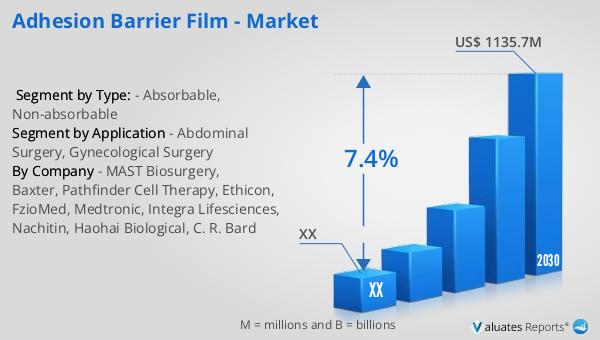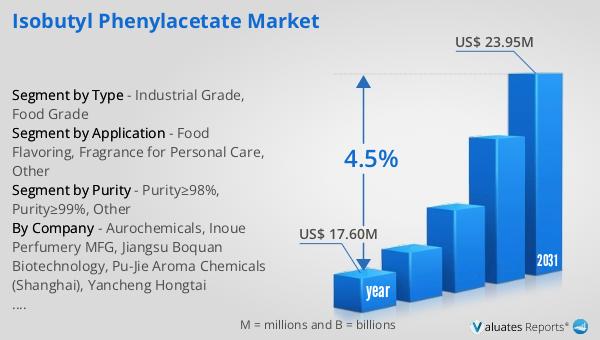What is Adhesion Barrier Film - Global Market?
Adhesion barrier films are specialized medical products designed to prevent the formation of adhesions, which are bands of scar tissue that can form between tissues and organs following surgery. These films are used in various surgical procedures to reduce the risk of complications associated with adhesions, such as pain, bowel obstruction, and infertility. The global market for adhesion barrier films is driven by the increasing number of surgical procedures worldwide, advancements in medical technology, and growing awareness about the benefits of using adhesion barriers. In 2023, the global market for adhesion barrier films was valued at approximately US$ 689 million. This market is expected to grow significantly, reaching an estimated size of US$ 1135.7 million by 2030, with a compound annual growth rate (CAGR) of 7.4% during the forecast period from 2024 to 2030. The North American market, in particular, is a significant contributor to this growth, reflecting the region's advanced healthcare infrastructure and high adoption rate of innovative medical products. As the demand for minimally invasive surgeries and improved patient outcomes continues to rise, the market for adhesion barrier films is poised for substantial growth.

Absorbable, Non-absorbable in the Adhesion Barrier Film - Global Market:
Adhesion barrier films can be categorized into two main types: absorbable and non-absorbable. Absorbable adhesion barrier films are designed to be gradually absorbed by the body over time. These films are typically made from materials such as hyaluronic acid, carboxymethylcellulose, and polyethylene glycol. The advantage of absorbable films is that they do not require removal after surgery, reducing the need for additional procedures and minimizing the risk of infection. They are particularly useful in surgeries where the risk of adhesion formation is high, such as abdominal and pelvic surgeries. Absorbable films are often preferred by surgeons due to their ease of use and effectiveness in reducing adhesion-related complications. On the other hand, non-absorbable adhesion barrier films are made from materials that remain in the body permanently. These films are typically made from materials such as expanded polytetrafluoroethylene (ePTFE) and silicone. Non-absorbable films are used in situations where long-term adhesion prevention is necessary, such as in certain types of reconstructive surgeries. While they offer the benefit of providing a permanent barrier against adhesions, they may require surgical removal if complications arise. The choice between absorbable and non-absorbable films depends on various factors, including the type of surgery, the patient's condition, and the surgeon's preference. Both types of films play a crucial role in improving surgical outcomes and enhancing patient recovery. The global market for adhesion barrier films is witnessing a growing demand for both absorbable and non-absorbable products, driven by the increasing number of surgical procedures and the need for effective adhesion prevention solutions. As the healthcare industry continues to evolve, the development of new and improved adhesion barrier films is expected to further drive market growth.
Abdominal Surgery, Gynecological Surgery in the Adhesion Barrier Film - Global Market:
Adhesion barrier films are widely used in abdominal and gynecological surgeries to prevent the formation of adhesions, which can lead to serious complications. In abdominal surgery, adhesions can cause bowel obstruction, chronic pain, and difficulty in future surgical procedures. Adhesion barrier films are applied to the surfaces of organs and tissues during surgery to create a physical barrier that prevents the formation of scar tissue. This is particularly important in surgeries involving the intestines, as adhesions can lead to life-threatening complications. The use of adhesion barrier films in abdominal surgery has been shown to reduce the incidence of adhesion-related complications, improve patient outcomes, and decrease healthcare costs associated with adhesion-related complications. In gynecological surgery, adhesions can cause infertility, pelvic pain, and complications in future pregnancies. Adhesion barrier films are used in procedures such as hysterectomy, myomectomy, and endometriosis surgery to prevent the formation of adhesions and improve reproductive outcomes. The use of adhesion barrier films in gynecological surgery has been associated with improved fertility rates, reduced pain, and better overall patient satisfaction. The global market for adhesion barrier films is driven by the increasing number of abdominal and gynecological surgeries, the growing awareness of the benefits of adhesion prevention, and the development of new and improved adhesion barrier products. As the demand for minimally invasive surgeries and improved patient outcomes continues to rise, the use of adhesion barrier films in abdominal and gynecological surgeries is expected to increase, further driving market growth.
Adhesion Barrier Film - Global Market Outlook:
The global market for adhesion barrier films was valued at approximately US$ 689 million in 2023 and is projected to grow significantly in the coming years. By 2030, the market is expected to reach an estimated size of US$ 1135.7 million, reflecting a compound annual growth rate (CAGR) of 7.4% during the forecast period from 2024 to 2030. This growth is driven by the increasing number of surgical procedures worldwide, advancements in medical technology, and growing awareness about the benefits of using adhesion barriers. The North American market, in particular, is a significant contributor to this growth, reflecting the region's advanced healthcare infrastructure and high adoption rate of innovative medical products. The market dynamics are influenced by factors such as the rising demand for minimally invasive surgeries, the increasing prevalence of chronic diseases, and the growing geriatric population. As the healthcare industry continues to evolve, the development of new and improved adhesion barrier films is expected to further drive market growth. The market outlook for adhesion barrier films is positive, with significant opportunities for growth and innovation in the coming years.
| Report Metric | Details |
| Report Name | Adhesion Barrier Film - Market |
| Forecasted market size in 2030 | US$ 1135.7 million |
| CAGR | 7.4% |
| Forecasted years | 2024 - 2030 |
| Segment by Type: |
|
| Segment by Application |
|
| By Region |
|
| By Company | MAST Biosurgery, Baxter, Pathfinder Cell Therapy, Ethicon, FzioMed, Medtronic, Integra Lifesciences, Nachitin, Haohai Biological, C. R. Bard |
| Forecast units | USD million in value |
| Report coverage | Revenue and volume forecast, company share, competitive landscape, growth factors and trends |
